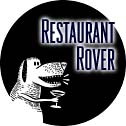|

Comment
on this story
Rating
(out of five)



|
|

The American Cafe
11400 Kingston Pike
675-0520
by Ally Carte
Restaurants, like novels, can fit into tidy genres. Head to an Italian place and you know you'll confront a menu full of tomato-sauce-laden dishes and nice bottles of Chianti. Mexican means beans and tortillas; Chinese, stir frys and foo youngs; German, pig and potatoes. Without these expected dishes, confusion would reign. While these standard options may not represent the best food of any given country's cuisine, they certainly help the eating public to know what they can expect.
Since Americans as a people are a) largely a mixed-up stew of other nationalities and b) have conveniently wiped out the native culture that occupied this land first, we've had to more or less invent our own ethnic restaurants that celebrated the best dishes and atmosphere that these United States had to offer.
You'd think with all of the ethnicities and rich agricultural tradition we have, this cuisine would be something special. Instead, what we seem to have come up with is "casual dining." Walk into an "American" place and you know you'll be confronted with enormous quantities of not-bad food in a kid-friendly but also alcohol-friendly atmosphere that doesn't really stretch your imagination but that will fill you up fairly inexpensively.
The American Cafe—formerly Silver Spoon and part of a small East Coast chain—is all that you'd expect from an American restaurant. Apart from the occasional piece of UT paraphernalia, this tastefully decorated Farragut location could be almost anywhere in the country. I suspect the other location in the Gallery Shopping Center near West Town Mall is simply a variation on the same black-lacquer with "antique" art prints and subtle lighting theme.
The menu designers are proud of their far-ranging selections. "From our Southern-style Barbecue Ribs and Southwestern Chicken to the Original New York Pasta Pie and Texas BBQ Chicken Pizza, we pick the best from North, South, East and West," they say, "a little Cajun, a taste of Tex-Mex, some down-home Southern favorites and some cool West coast flavors. Like America, we are a veritable melting pot of different tastes." Which is all very accurate.
What they fail to mention is that they have taken all of these different flavors and boiled them down to a bunch of dishes that all taste almost exactly the same—highly processed and somewhat sweet. This is our cultural legacy. Instead of celebrating the spice of Cajun food, the Fettuccine New Orleans ($9.99) is a bland concoction of chicken, peppers, and scallions in a pink alfredo-esque sauce. Rather than investigate what makes a Chicken Pot Pie ($8.29) so comforting, the corporate chefs simply packed chicken, broccoli, and carrots in what tastes like, again, alfredo sauce, covered the whole thing in mild cheese and popped some slightly greasy puff pastry on top. Rather than add flavor to the food, simply add more fat, which is what Americans want. Close your eyes and both dishes taste surprisingly similar.
It's easy to bash a chain restaurant, given that their mission is to appeal to as many people as humanly possible. The American Cafe is certainly the best of the casual dining lot—sorry Ruby's. Their menu is, in concept if not execution, interesting, with samples from most American regions. The Northwest's salmon gets a nod or two, the South's barbecue heritage made the cut as did the North's love of pot roast. Some standard American-ethnic shows up as well, with an Italian Meatball pasta ($7.99) and a Tomato Basil Pizza ($6.99) in the mix. The desserts are delish. The S'more Sundae ($4.49) recalls the best of American campfire foods, with ice cream, chocolate syrup, graham cracker crumbs, and an oozing toasted marshmallow shell.
Still, this is what we're telling the rest of the world American dining is—inoffensive. Rather than pride ourselves on good, tasteful food that captures some essence of the regions that they come from (which most Italian and German and Mexican and Asian restaurants manage to do despite their limitations), we're content with huge portions of mediocre food that simply tastes like the last processing plant it was extruded through. Perhaps what we're really telling the world is that American cuisine is simply about the bottom line, about capitalism in action. It's sad when, in reality, it could be so much more.

March 15, 2001 * Vol. 11, No. 11
© 2001 Metro Pulse
|





